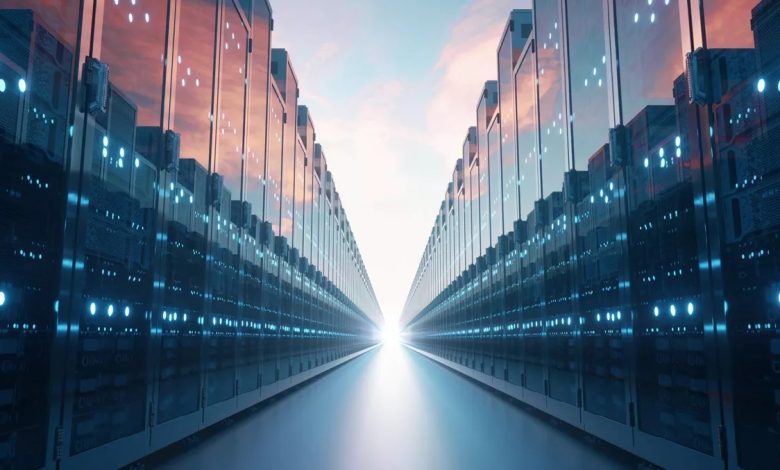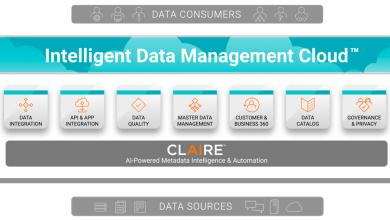
The data age is here, and the amount of data collected and analysed is perhaps the most spectacular result of the digital revolution.
 In an interview with DSA, Sathish Murthy, Director of Systems Engineering Cohesity ASEAN/India, stated that data is on a massive upward spiral nowadays and that we are looking at a data volume of 25 zettabytes.
In an interview with DSA, Sathish Murthy, Director of Systems Engineering Cohesity ASEAN/India, stated that data is on a massive upward spiral nowadays and that we are looking at a data volume of 25 zettabytes.
“It means that if you build a pipeline from here to the moon, you can actually reach the moon ten times. So that’s what we’re looking at in terms of growth,” he continued.
He noted that every single organisation, whether small, medium, or large, is aiming to double or triple their data capacity — whether on-premises, in the cloud or wherever they are. The question is, what kind of data are you storing? Is it really worth it?
“If you look at our history in the market, most customers are happy to do a backup but you have to understand that backups are only insurance,” Sathish said. “If something goes wrong, [you think,] ‘I’ll fix it,’ but that’s a big question mark today because I usually ask my customers, ‘Have you ever recovered your 2010 or 2015 data?’”
Many organisations will likely have limited to no idea whether this data, or data stored on systems from this time period, will be recoverable. However, this is an issue with companies expecting their backups to last a long time, so that they can be recovered as and when required. But technology changes over time. What happens if a certain system or hardware is replaced or upgraded?
For instance, let’s say your company retained all of its data and backups on a technology called Windows NT, which ran on particular hardware. If you’re no longer able to use Windows NT because it’s not supported anymore or you don’t have the necessary hardware, you won’t be able to recover the data you saved as a backup.
That’s where a Data Management-as-a-Service (DMaaS) solution comes in handy, allowing you to better retain all of your data and turn it into meaningful information for your business. “You’ve claimed your data, you’ve got a repository, and you’ve got a replica of it, and you can do a lot with it. However, you’ll need a repository that can scale, extend, and evolve, which is exactly what DmaaS provides,” Sathish continued.
Although data management SaaS products have their benefits, we asked Sathish about the potential challenges that data management as a service offerings might face when it comes to the cloud, he said the challenge is that organisations have so much data, in many cases too much data, that determining what needs to be backed up and stored in the cloud might be really difficult.
Cloud adoption, for example, generates massive amounts of new data of all kinds. Furthermore, managing and preserving this data usually necessitates a new set of point products, policies and standards, skill sets and person-hours, as well as other IT requirements. The cloud improves the organisation but it also increases the demand for data management throughout the IT ecosystem.
“Not only that but the challenges of using legacy technology still exist. You can’t eliminate the issues of legacy data management technology completely with a few new solutions.” I usually tell my customers. To modify oneself, you need next-gen data management technology.”

Here are some of the problems that Data Management-as-a-Service (DMaaS) is built to address. Backup and recovery, Disaster Recovery (DR), archiving, file and object services, dev/test provisioning, data governance, security, and analytics are all available as a comprehensive, integrated set of products through a Software-as-a-Service (SaaS) architecture under DMaaS.
Because it doesn’t create new silos, the right DMaaS solution, according to Sathish, fits within and helps you fulfil your multi-cloud and hybrid cloud objectives.
The Difference Between Legacy Data Management and DMaaS
DMaaS is different from legacy data management approaches in a number of ways. Sathish compares the two with the analogy of making and getting a cake. You’d have a lot of different steps to get it done with legacy data management approaches. For a start, go to the store and pick the flour of your choice. Then you must bake it at the appropriate temperature. You’d need those skills to make it, and you’d also need to manage it and know when to switch the cooker on and off.
Whereas for DMaaS, it’s like ordering a cake from a food delivery service like GrabFood.
“So there are basically fewer stages [when compared to legacy approaches], and you don’t have much to manage. It’s incredibly simple to use because it converts from a CapEx model, which is money spent upfront. You only spend as much as you desire. It’s a major change but the customers, especially the mid-size and smaller customers, love it,” he explained.
On the other hand, with legacy approaches, you’d be responsible for managing, monitoring, configuring, and a variety of other tasks on your own. That’s not to suggest it’s a good or bad thing; businesses have varied demands, and not everyone wants to move all their applications to the cloud, according to Sathish.
Do you Still Need BaaS?
When asked if a standalone Backup-as-a-Service (BaaS) is required if other data management offerings, whether an on-premises solution or SaaS solution, are already in place, Sathish stated it depended on the maturity of the company. “Many data management SaaS products could seem new or cool, but it doesn’t imply it’ll give you all of the nitty-gritty functions and features that your customers need, which is why BaaS and other products in our DMaaS portfolio of solutions provide customers with the capabilities they need” he explained.
If you’re using Microsoft 365, which is a cloud-based application, DMaaS is a wonderful option, according to Sathish. Modern apps like MongoDB, Kubernetes, and Couchbase would also benefit from DMaaS.

Although DMaaS has all of the advantages for transforming data management, Sathish said “there are some applications that require Backup-as-a-Service, which provides basically the flexibility, control, management, and everything that an organisation needs.”
Backup is a great place to begin because it’s a fundamental data management operation that has to be performed to ensure business continuity. Even better, BaaS includes capabilities like ransomware protection. This is a critical feature because ransomware attacks have been on the rise for a few years.
What This Means for Cohesity
Competition is definitely heating up in the data protection space, as vendors continue to provide more options for organisations making the move to a data- and cloud-centric future. For Cohesity, since the expansion of the DMaaS offering in Southeast Asia was announced, many have asked what it means for the company going forward, and how the company compares with fierce rivals such as Rubrik.
Both firms are well respected, according to Sathish but Cohesity is a data platform company, which sets it apart from Rubrik. This means Cohesity can address a wide range of customer challenges.
“We are a platform of choice for anything with a latency of less than five milliseconds. Cohesity encompasses backup and recovery, archiving, long-term retention, file services, object services, cloud services, and data security services,” said Sathish. “We are a complete platform versus a point solution.”
Sathish concludes that Cohesity provides significant value to a wide range of organisations in many industries, such as reduced TCO, increased productivity, and efficiency, and this is where Cohesity continues to assist its customers.




